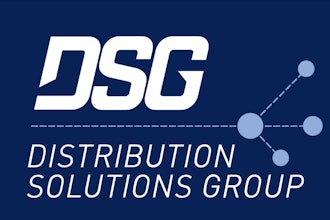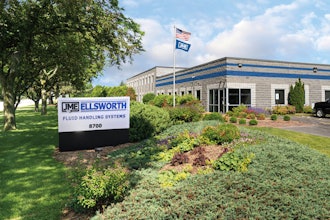
Self-proclaimed UX geek Sean Gerety famously said, “The technology you use impresses no one. The experience you create with it is everything.”
User experience isn’t only crucial in the tech world; it is invaluable in business, period. It’s also the path CPGs should explore to continue moving forward and meeting customer demands: they must listen and innovate.
While the most recent industry expo focused on the latest packaging and processing technology advancements, those elements may not be the engine that drives CPGs forward and accelerates innovation. To satisfy customers, CPGs should look beyond the bells and whistles of technological advancement and more at its people, partnerships, mission and values. Being relationship-driven in your approach to growth and innovation solidifies valuable alliances.
Ultimately, CPGs may need to spend less time on operations and more time understanding customer needs and how to meet them — companies committed to your project's success, upholding your company’s mission and values, and those you trust will “weather the storm” with you. CPGs that embrace this paradigm are looking to contract packaging companies to take the operations piece off their plate. To better understand this outsourcing trend and learn more about how innovative communications and relationships support this model, we spoke with supply chain industry veteran Hank Canitz, VP of industry solutions for Nulogy, a Canadian software solution provider to leading brands.
Time to flip the story?
We see CPG companies produce about 25%-30% of their products outside of their facilities, Canitz says. This trend is fueling a co-pack industry growth of 10.2% compounded annually, per the Contract Packaging Association.
The pandemic hastened the trend as brands tried to meet growing consumer demand.
“There have been a lot of new CPG-type companies coming to market that specialize in selling their products via e-commerce," Canitz added. "Those businesses are not building manufacturing plants: they are the brand, but they have no internal manufacturing. Instead, they rely on third parties like GreenSeed to provide that capability for them.”
Seeing the forest for the trees
CPGs must consider whether products are standing on their own or are connected to other products. If they're connected, it's important to note that what happens to one product can impact others. In light of this, it's essential to maintain an end-to-end product view instead of looking at each product, supply, or piece of data in isolation. Understanding how every part of a system fits together can help make informed decisions before launching a single feature.
A new approach to doing business that has influenced how companies operate is the many-to-many business model. This model, known as a Multi-Enterprise Supply Chain Business Network (MESCBN), relies on a technology of the same name. It helps keep everyone in a supply chain informed about what's going on at all times. This way, a supply chain can easily flourish without stumbling, because there isn't a single point of failure due to consolidated data from which everyone involved has access. For example, Nulogy's CPG customers can now connect with multiple contract packagers and vice versa, thanks to MESCBN solutions.
The need for speed
High-level operational data visibility, as well as process collaboration, can help companies to achieve great things. For example, Nulogy’s MESCBN now delivers 20% better On Time and In Full (OTIF) performances over the industry average. This structure will provide a quicker response time and a higher on-time rate, which means that companies will exceed most deadlines without losing customers or overspending. It also results in the delivery of products or services about 24% cheaper than the industry average, allowing brands to employ more people to boost business growth.
"Suppliers need to know how their products are being utilized to properly plan manufacturing and allocate resources," Canitz says. "Inadequate supply chain visibility can lengthen supply times, create excess inventory, or lead to price hikes when companies have to buy from secondary suppliers when primary suppliers run out of stock."
Growth with data
When we order pizza from Domino's, we're given regular updates by the minute: "Your pizza is out of the oven… the delivery guy is three minutes away." It's a no-brainer that business-to-business customers would expect to get updates of this kind on major orders considering how much they spend on a custom or bespoke product.
Using integrated data makes it possible to bring together all the necessary components of the supply chain right before your eyes, including inventory status, product sources, materials, etc. With the right systems, this data can be accessed with a single barcode scan.
This data is valuable for inventory management, procurement and process optimization.
"If you don't have near real-time information, you accumulate inventory, resulting in distressed inventory and waste," Canitz says. "If you have real-time information, you can minimize uncertainty and reduce risk."
Data for a healthy ecosystem
While fully seeing what is happening inside your own business or company sounds doable, most companies are simply not set up to do so. Most companies, even prolific brands, are still using ERP and APS systems, which are single enterprise solutions — by definition. The adoption of multi-enterprise solutions, which share data across multiple enterprises, has only just begun.
Through multi-enterprise solutions, data flows beyond internal components, reaching downstream to suppliers and upstream to customers. There are various ways a supply chain can closely resemble a typical recipe book, making the processes more intuitive overall. CPGs may decide to branch out from traditional things by creating new ingredients from scratch, purchasing an ingredient from those same sources as those who make it, or bringing in new chefs. But supply chains are becoming increasingly shaky, so companies need to begin putting their best foot forward when it comes down to efficiency, collaboration and communication.
Using data analytics in MESCBNs, CPGs can, for example, identify whether their contract suppliers will meet a new retail order. The CPG manufacturer can quickly respond to their retail customers' requests by viewing their contract suppliers' capacity and inventory in near-real time.
Cutting costs
Digital traceability is the best method of reducing risks and costs of recalls.
“It provides companies with the data granularity they need to recall a smaller portion of production. If the product is coming from upstream, it’s hard to do that quickly if it’s a manual process,” says Canitz.
For example, in one case of a recent produce recall, the product wasn’t contaminated at the field or picking level, but at the storage facility. In order to track problems when they occur and at what stage they occur, every step in the supply chain must be captured digitally. Unfortunately, if this doesn’t occur, then a recall happens manually, and the cost to the company and to the public can soar.
“When these things happen, the food and beverage companies pull data and start investigating. Even if they have some data, it’s usually at a higher level requiring a larger recall and destruction of product," Canitz says. "The lack of digitally captured data delays the recall process and puts people at risk.”
The difference between responding in a day versus half an hour, Canitz points out, can be huge from the standpoint of cost and customer injury.
If companies manage their supply chains effectively using centralized technology, it would be harder for something like this to happen because all stakeholders would be "talking to one another" under one standard system, which could forestall massive losses.
All systems go
As Bill Gates said, "The future road ahead looks fantastic — for those who have the right maps. The important thing is to be ready. The winners in business today are connected and work together as a team to do great things.”
Brad Meridith is the director of client service management at GreenSeed Contract Packaging.






















